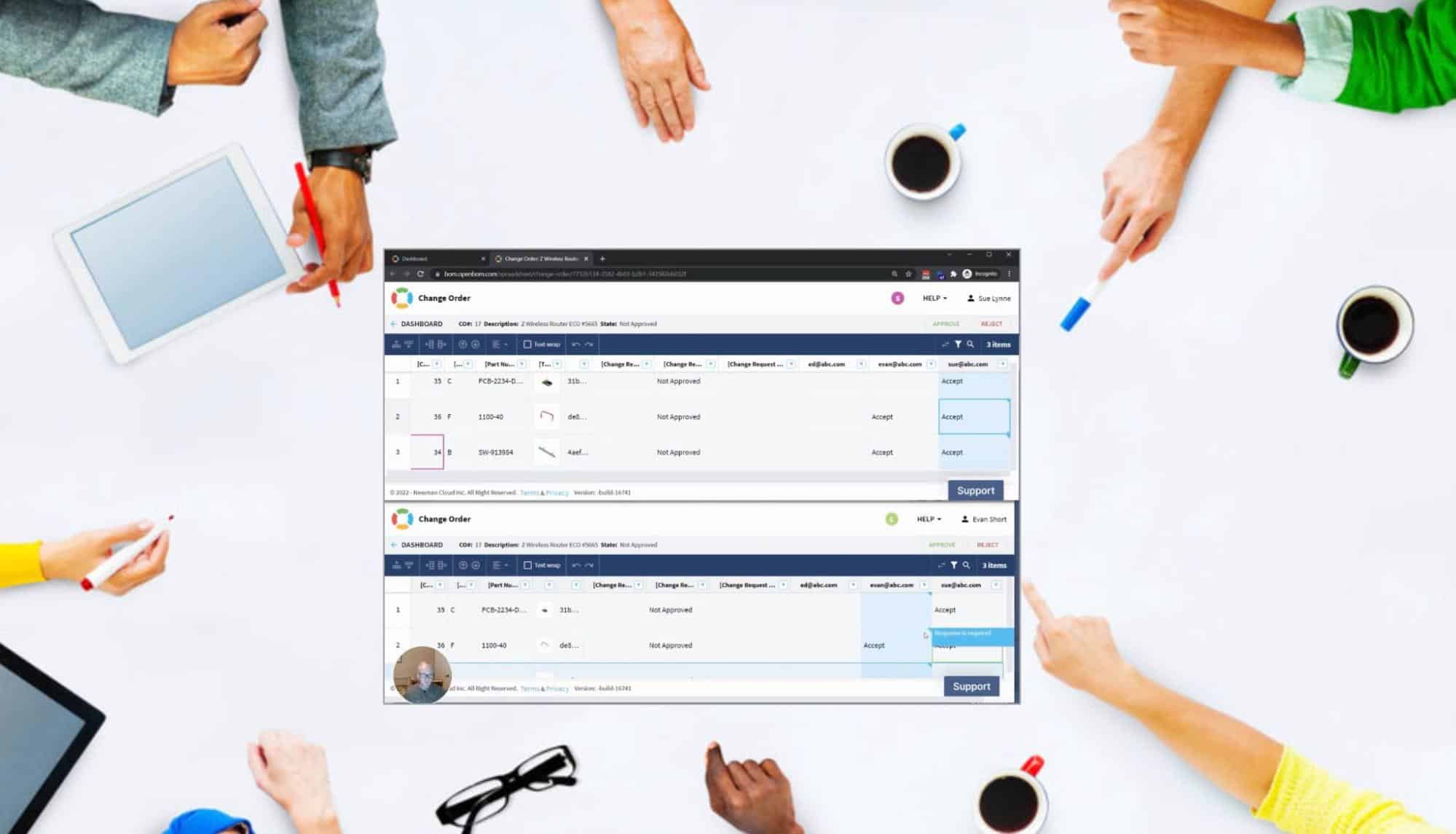
Change is the most important and permanent thing when it comes to design, product engineering, manufacturing, and procurement. OpenBOM gives you a multi-layered and flexible model to organize and manage changes and change processes. It allows you to capture and track changes, keep the history of revisions, and also provide control of the change process including the ability to approve or reject the changes before they will become a revision. OpenBOM change management control is a foundation of product change traceability and history tracking.
A big picture of change management allows you to track every single change operation, combined into item and BOM revisions including all change approval used for that.
Change History
OpenBOM automatically controls change history. Every time you make a change, OpenBOM tracks the change operation and appends it to the history of changes. Created fully automatically, it doesn’t require any special commands. You can get to catalog history or BOM history and always see who made the change and what was changed.
Revision Control
OpenBOM allows you to define item revisions. An item revision includes an immutable record of all information about a specific item, including all attributes and all files. Files attached to the item are revised and OpenBOM preserves a full history of these files.
If an item has a BOM (in case an item is an assembly), the BOM Is revised and an immutable copy of the BOM revision is preserved as well. In such a way you have a full history of all information about items and corresponding BOMs.
Change Request and Change Approval
Although the revision mechanism is very powerful, you might want to set a more sophisticated mechanism to control who is making changes and, most importantly, who is allowed to create a new revision. This is what the change request and approval mechanism does. If activated, OpenBOM will request approval before any revision is created.
Video 8: Change Management Process (ECR/ECO)
In the following video, we demonstrate an introduction and simple change management process including, revision, change request, and approval. Check it out.
Other videos from OpenBOM Demo Series
- Video 1: Introduction
- Video 2: Data Model, Catalogs, and BOMs
- Video 3: Item Management
- Video 4: CAD integrations
- Video 5: Importing your data
- Video 6: Formulas and calculations
- Video 7: Types of BOMs
- Video 8: Change Management
- Video 9: Purchasing and Planning
- Video 10: Enterprise Integrations
Conclusion:
We are bringing an introductory video series to help everyone learn about OpenBOM. In this article and video, we speak about the fundamental element of OpenBOM data management that allows the control of changes. It includes (1) change history created automatically, (2) revision control for items and BOMs; (3) an approval mechanism for change orders. Check them out – I hope you will find them simple, easy, and powerful at the same time.
REGISTER FOR FREE and start a free trial to check how OpenBOM can help you today.
Best, Oleg
Join our newsletter to receive a weekly portion of news, articles, and tips about OpenBOM and our community.










